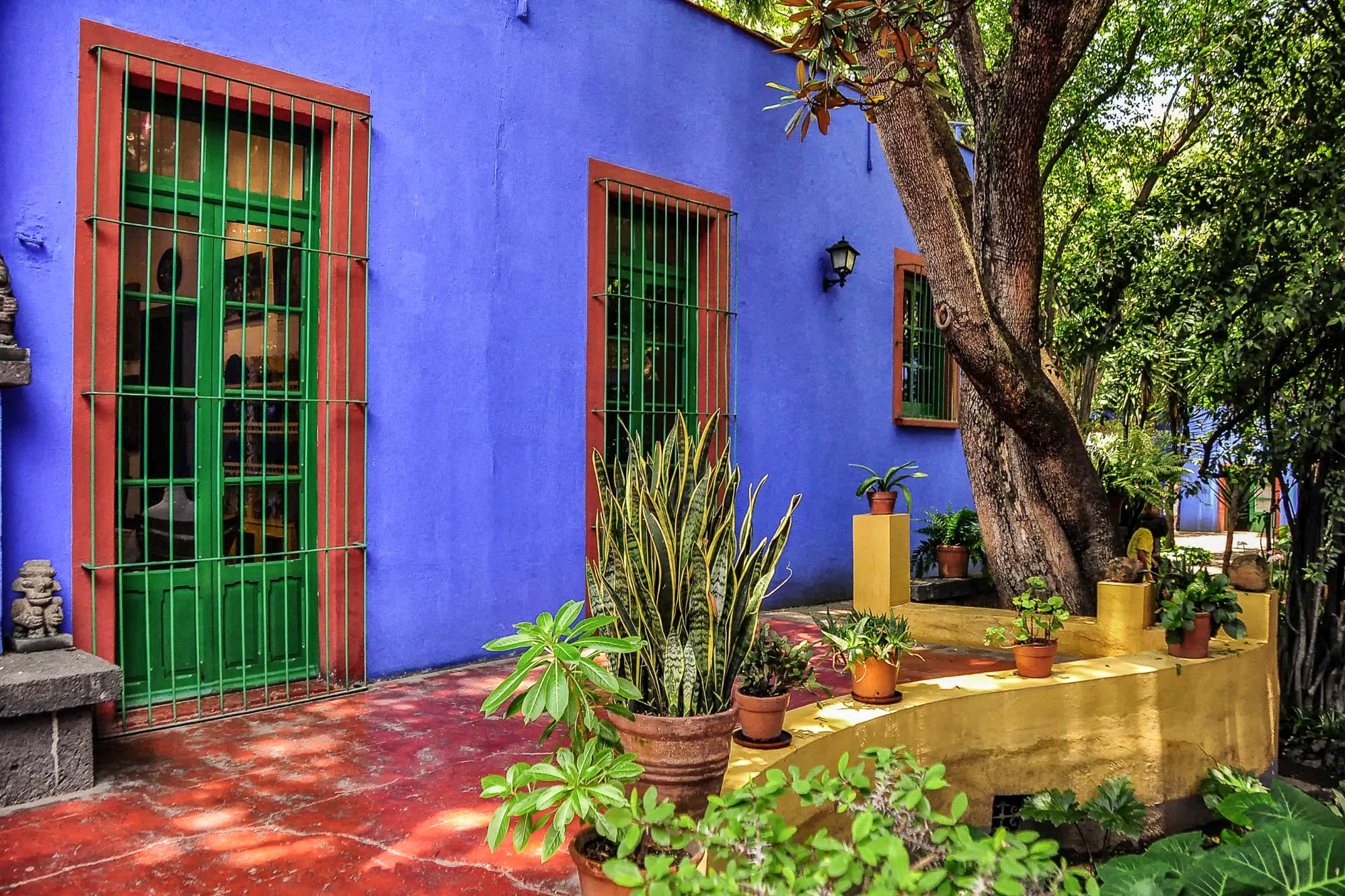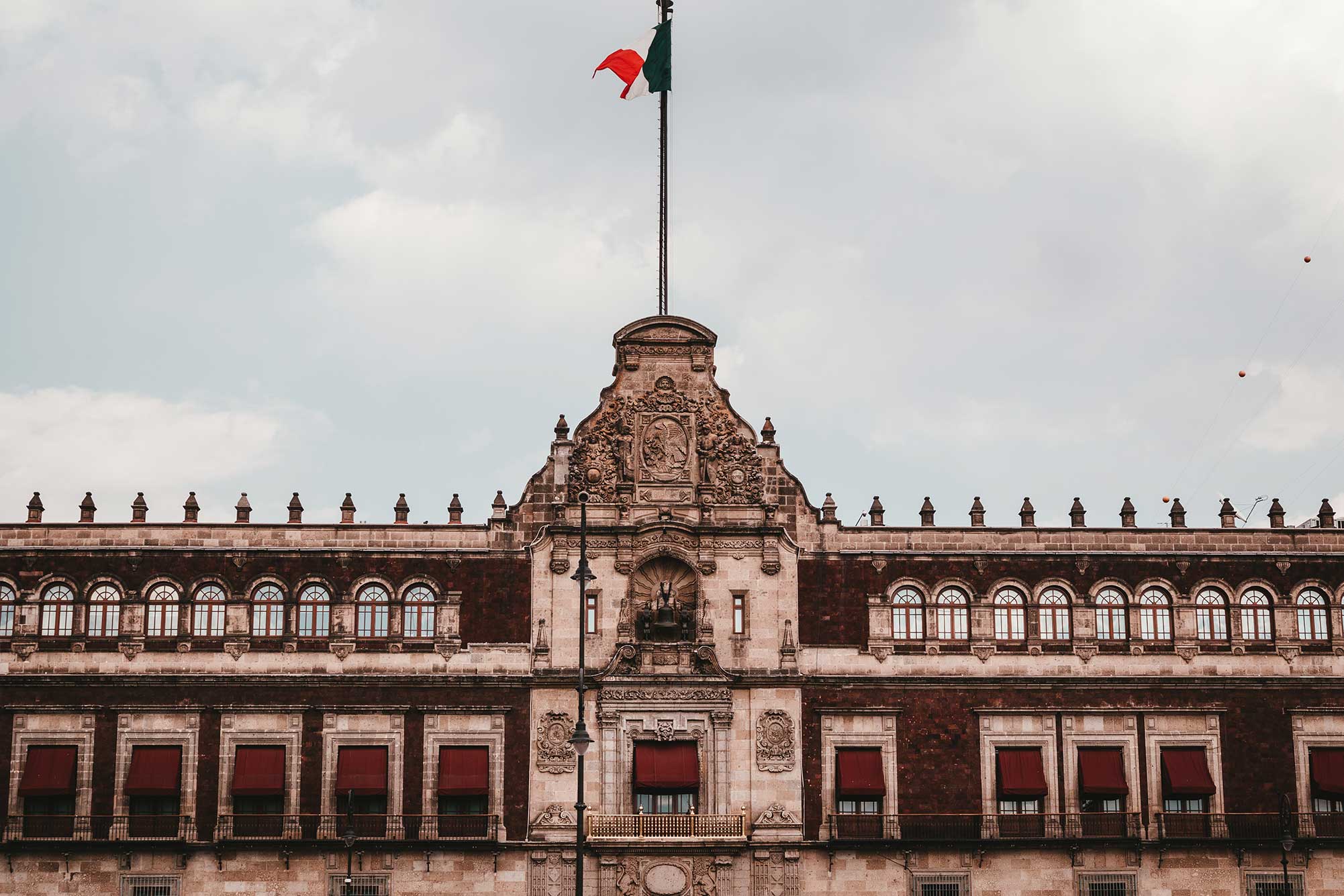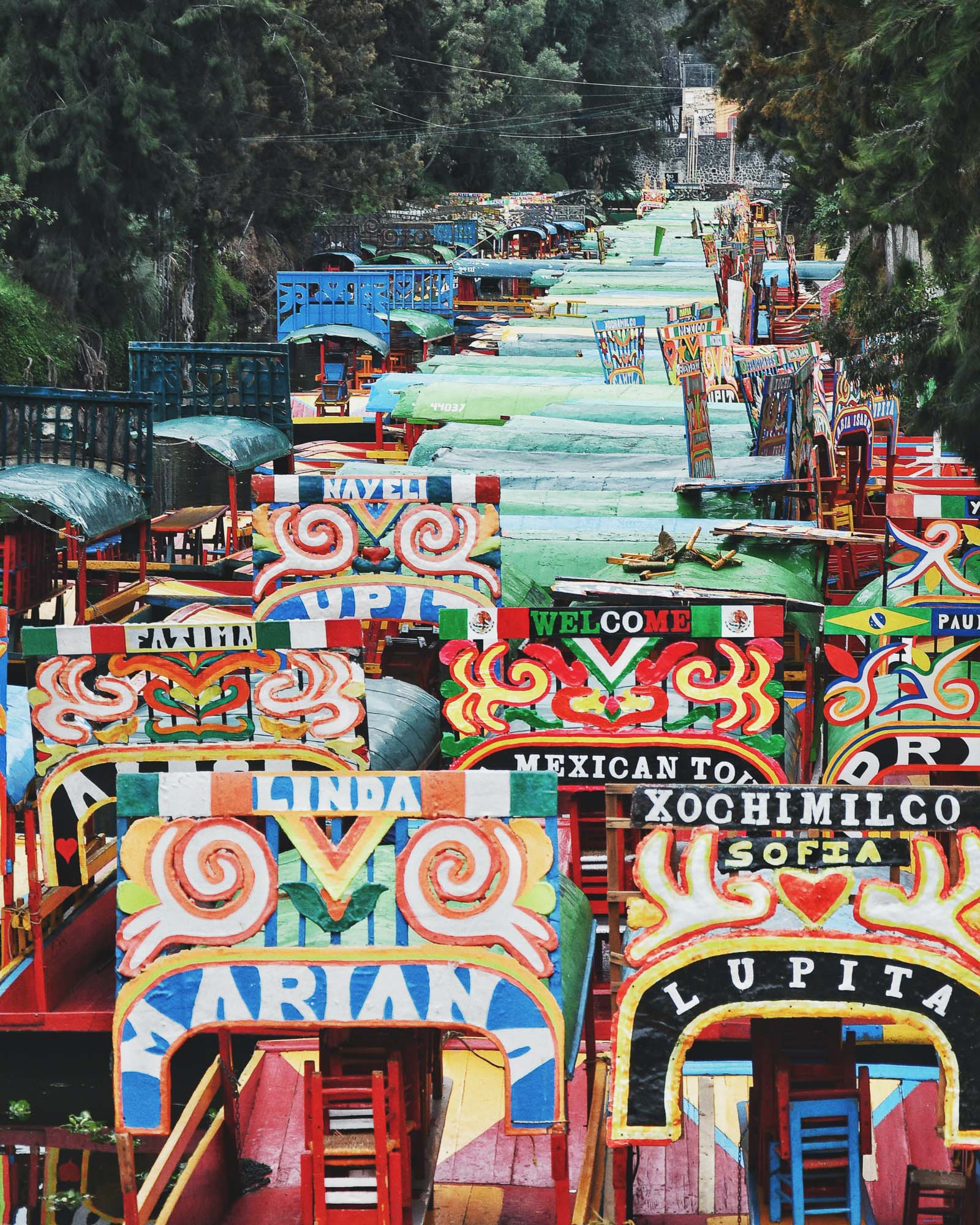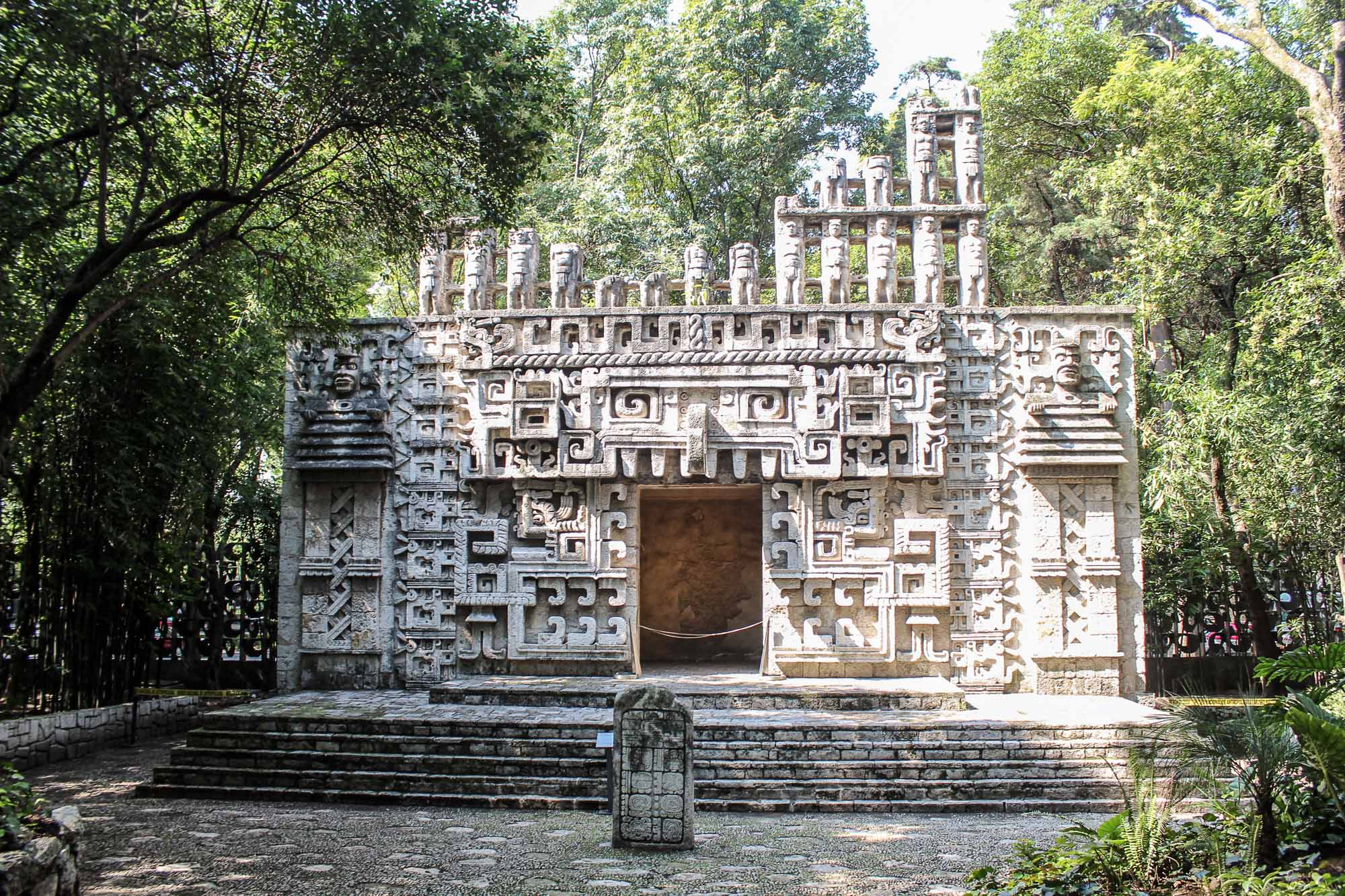Mexico City: Must-See-Places
Whether you prefer museums and walking tours or tacos and wrestling experiences, the hustle-bustle of city life or beautiful plazas and parks, Mexico City (Ciudad de Mexico or CDMX) is the city for you. If it’s your first time to the city or if you’ve been here before but simply didn’t have enough time for everything, put these can’t-miss six spots and experiences at the top of your list and you’ll see there is truly something for everyone in this vibrant and special city.

1. Frida Kahlo Museum
Londres 247, Del Carmen, Coyoacán, 04100 Ciudad de México, CDMX, Mexico
Situated in Coyoacán—a beautiful neighborhood in the south of Mexico City known for its colonial architecture, picturesque plazas, and narrow streets—the Frida Kahlo House is a museum visit you can’t miss. And with its bright, cobalt blue walls, your eyes literally can’t miss it!
Step inside the home where Frida was born, grew up, lived with her husband Diego Rivera for many years, and where she later died. You’ll be instantly transported to old Mexico, where it feels like Frida just left the room. Explore the home on your own or get an audio tour (pro tip: we highly recommend it to really understand Frida’s story and art) and learn about the renowned artist as you discover her family portraits, clothing, art, and studio—in which you can still see the paint caked to her palette.
It’s advisable to purchase tickets in advance as the line can get quite long for in-person purchases. After you’ve finished your visit, take a walk down Calle Ignacio Allende to Coyoacán Market where you can buy great souvenirs and try delicious tostadas (look for the bright yellow signs for "Tostadas Coyoacán ” in the center of the market) or seafood (on the exterior corner of the market) at La perla escondida . From there, continue your walk down the street to end up at Plaza Hidalgo where you can check out Hernan Cortés’s house and shop at the Mexican Craft Market.

2. El Zócalo
P.za de la Constitución S/N, Centro Histórico de la Cdad. de México, Centro, Cuauhtémoc, 06010 Ciudad de México, CDMX, Mexico
With Aztec ruins butted up against a Spanish Cathedral, you can experience a lot of Mexican history in one place at el Zócalo, the main square in Mexico City. As you arrive, you’ll be welcomed by a massive Mexican flag and surrounded by buildings like the National Palace, the Federal District building, the Old Portal de Mercaderes, and the Mexico City Metropolitan Cathedral. After a walk through the Cathedral, head over to the northeast part of the plaza to see the ruins of the Aztec city Tenochtitlan’s Templo Mayor. The Aztecs considered this place to be the center of the universe, so Cortés wanted the Cathedral to be built on top of it, which is why most of it is still underground today.
Next, head over to the National Palace where you can view some of Diego Rivera’s most impressive murals charting the history of Mexico. Then cross over the square to head to Avenida Franciso Madero, a pedestrian street with lots of shops and street performers, which will take you to the Palacio de Bellas Artes , one of the most beautiful buildings in the city (pro tip: Go to the Sears across the way and take the elevator to the eighth floor to enjoy an impressive view of the Palacio over coffee at Finca Don Porfirio Juarez ).
For a great free walking tour of the area, check out Estación Mexico. Hungry? Try La Casa de Toño or Casa Churra , both are local chain restaurants that serve up delicious pozole.

3. Xochimilco
Xochimilco, CDMX, Mexico
If you want a truly incredible and unforgettable experience, head down to Xochimilco, located about 45 minutes to an hour south of the city center by car depending on traffic (pro tip: here is a good spot to have your driver drop you off; it has a big, visible archway and easy access to the boats). Xochimilco was once a lake but is now a series of canals. Trajineras—wooden, gondola-like boats painted in bright colors—will take you down these canals and past multiple chinampas (artificial islands), one of which is known as the Island of the Dead Dolls due to its accumulation of dolls in honor of a young girl who drowned nearby.
You can hire a trajinera for about 500 pesos an hour ($20-$25 USD); this rate is per boat—not per person, and expect to give a 200 peso tip. You can also rent a speaker (bocina) for about 200-300 pesos depending on how big you want it. While onboard, buy elote (corn on the cob slathered in mayonnaise, cheese, lime, salt, and chile), pulque (a fermented Aztec drink), and other delicious food from vendors who sell from their own boats. You can even hire a mariachi band or marimba (looks like a massive wooden xylophone) players for a song or two!

4. Museo Nacional de Antropología
Av. P.º de la Reforma s/n, Polanco, Bosque de Chapultepec I Secc, Miguel Hidalgo, 11560 Ciudad de México, CDMX, Mexico
Once you’ve experienced some of the city’s history firsthand, it’s time to head to the Museo Nacional de Antropología (Anthropology Museum). Here you can learn about the history of both the Aztec Empire and modern-day Mexico. Get ready to spend at least two hours here as there is a lot to see.
If this will be your first visit to the museum, we suggest sticking to the first floor, which is where you’ll learn more about the history of the Aztecs, the rise and fall of their Empire, and their continued influence on Mexican culture. You’ll find the highlights of the museum midway through the first floor (directly in front of you when you enter the museum’s beautiful courtyard): the enormous, impressive Aztec sunstone and other important statues.
If you’re up for another museum after your visit, head to the contemporary art museum Museo Tamayo Arte Contemporáneo , which is about a five minute walk away inside Chapultepec Park. If you’re museum-ed out, step outside the Anthropology Museum to enjoy the Voladores De Papantla , a ritual ceremony in which a group of people (usually men) dance before climbing up a 30-meter pole, tie themselves by the feet to said pole, and then slowly descend, flying upside-down, bit by bit until they reach the ground. It might sound strange, but trust us—it’s worth it. This spectacle usually takes place every hour on the weekends.

5. Chapultepec Castle
Bosque de Chapultepec I Secc, Miguel Hidalgo, 11580 Ciudad de México, CDMX, Mexico
Before or after your visit to the Anthropology Museum, you’ll want to explore Chapultepec Castle. Situated on a hill overlooking Bosque de Chapultepec , the castle was built as a summer house for the viceroy and later served as the official residence of Emperor Maximilian I. From 1882 to 1939 the Presidents of Mexico used it as their primary residence.
Expect to pay a small price for admission, after which you'll have a 15 to 20 minute walk uphill to arrive at the castle gates. Once you arrive, head to your left to enjoy a courtyard and incredible views of Chapultepec Park before entering the castle. Highlights inside include some impressive murals by David Alfaro Siqueiros, Juan O'Gorman, and José Clemente Orozco, the castle bedrooms and sitting rooms, and the beautiful black and white marble flooring that covers the outdoor patios. There are also some great opportunities for photographs on these patios given the impressive views of Paseo de la Reforma.
After your visit, wander through the vast Chapultepec Park, which rings in at 686 hectares (that’s 1,695 acres; in comparison, Central Park in New York City covers 843 acres). It’s home to a lake, zoo, amusement park, and tons of delicious food stands (pro tip: next to the castle is the Audiorama , a garden where no talking is allowed and they play classical music; it’s perfect for reading or just chilling out to escape some of the city hustle and bustle).

6. Must-See Performances
Since we couldn’t pick just one, we decided to include two of the most immersive and incredible performances Mexico City has to offer.
First, Amalia Hernández’s Mexican Folk Ballet (Ballet Folklórico de México) isn’t quite what you might think. It’s not a traditional ballet per sé, but rather a showcase of different traditional regional dances from around the country. From the costumes and choreography to the sets, this is a performance rich in culture, history, and fun! And to top it off, it’s held in the beautiful Palacio de Bellas Artes, home to some incredible murals by Diego Rivera, David Siqueiros, Rufino Tamayo, and José Clemente Orozco.
Another experience we’d be remiss not to mention is Lucha Libre —the renowned Mexican form of wrestling. Held at Arena Mexico in Doctores, a colonia (neighborhood) next to La Roma, Lucha Libre is an immersive experience for all your senses. While watching luchadores in extravagant costumes, you’ll hear air horns and chants from fans, smell the Cup of Noodles sold by vendors with salsa and lime, and definitely get a michelada (beer and clamato—a mixture of clam and tomato juice) to enjoy while you watch the fun and wild show.
{$section.placeName}
{$section.address}
{$section.addressNotes}
{$section.description}